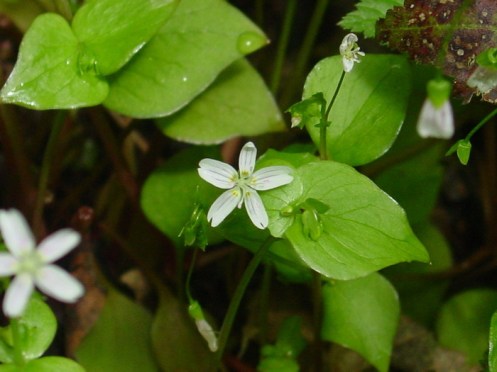Cleavers (Galium Aparine) Also called Goosegrass, Barweed, Amor De Horelano
Galium: a large genus of annual and perennial herbaceous plants in the family Rubiaceae.
Aparine: Latin word meaning "To Seize."
Cleavers is weedy, meaning it shows up in my garden over and over again, despite my repeated attempts to yank it out. The name Aparine is appropriate, as it has small hooks on the leaves and stems that will attach to anything growing nearby, in an attempt to pull itself closer to sunlight.
Cleavers prefers a
loose moist leafy soil in partial shade. It provides food for the larvae
of many butterfly species. Leaves are
narrow, lance-shaped and are rough along the margins and surface, the
prickles pointing backwards, they occur in whorls of 6 to 8 leaves,
around and along the square, delicate, branching stem which may grow to 6
or more feet in length. The flowers are white, tiny, 1/16 to 1/8 inch
in diameter and star-like, growing in a stemmed bud rising from the leaf
axils and arranged in clusters or whorls, six or eight together,
blooming separately, 2 or 3 at a time, so flowers and seeds are present
in each cluster. The seeds are little round vessels, covered with hooked
bristles and readily clinging, to whatever they touch, ensuring
dispersal of the seeds.
I have read that the plant is edible, but it must not be very good – most books/sites seem to poo-poo it as a food source.


